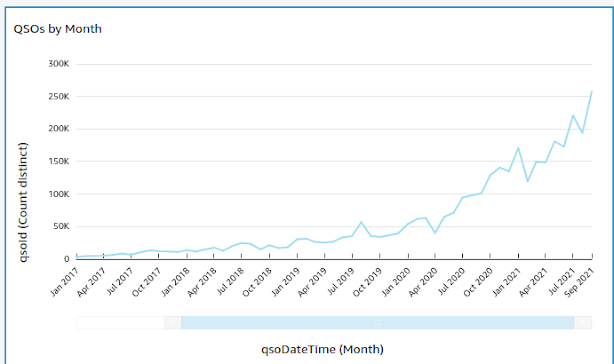The First Three Years
On July 6, 2019, I took the exam for the amateur radio Technician class license. I knew right away that I had passed, but I had to wait more than a week until on July 15, 2019, I looked at the FCC call sign database and found my name listed with call sign KN6DBC.
My reasons for taking the exam were twofold. First, as a former shortwave listener (SWL), I was looking for ways to rekindle the enjoyment of using radio as a hobby in what is now, for all practical purposes, a post-shortwave world. Second, as a recent empty-nester, I was looking for opportunities to do some volunteer work. I'm a sailor, and have been around the water my entire life. The United States Coast Guard Auxiliary looked like it might be a good place to give something back to the community. Since I don't own a boat that would make a suitable Auxiliary facility, I thought that having the radio amateur license would give me a useful skillset that I could bring to the Auxiliary.
Much has happened over the ensuing three years, more than I would ever have thought possible on that summer day when I walked out of the exam location and drove to Ham Radio Outlet to purchase my first HT. Here's some of what I've spent my first three years in amateur radio doing.
- Made contacts through effectively all of the active FM satellites, with my first satellite QSO taking place just five days after I was licensed (the 50th anniversary of the Apollo 11 landing, no less) with WD9EWK
- (Re)learned Morse Code
- Upgraded my license to General
- Made HF contacts with stations on all six1 permanently inhabited continents
- Contacted an historical maritime coast station in Northern California that I used to monitor as an SWL
- Designed ten different versions of my own QSL card, plus several rove-specific QSL cards
- Contacted the flight deck of an Airbus A-320 while in flight
- Contacted a maritime mobile station that was in the Indian Ocean, 18,500 km from my QTH2
- Under the auspices of Parks on the Air, activated numerous state and national parks that I might not otherwise have even visited
- Contacted astronaut Kjell Lindgren, who was operating as NA1SS aboard the International Space Station
- Met some cool people, made some good friends, and learned a lot
What will the next three years bring? I now am a Coast Guard Auxiliarist, and I'm looking forward to beginning training for the radio watchstander program. At some point I'm probably going to have to pry open my wallet with a crowbar and acquire the necessary equipment to get on linear satellites. I'm still working on my DX Century Club, and I sure hope I won't still be saying that three years from now. I suppose there's an Extra exam in there somewhere. And finally, earth-moon-earth propagation is something I've always found intriguing, although that might wait until six to eight years from now, as the current solar cycle edges toward its minimum.
- While there is a permanent human presence in Antarctica, I'm told that the personnel rotate in and out quite a bit, so no one is a permanent resident in the sense that one is a permanent resident of, say, North America or Asia. That said, I'd really like to work a station in Antarctica one of these days.
- The circumference of the earth is 40,000 km, meaning no two stations can be separated by more than 20,000 km. That QSO is a personal distance record that I will probably never break.


Comments
Post a Comment